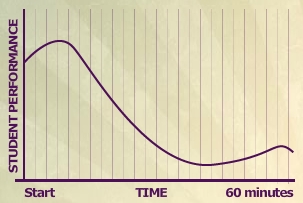No blackboard teaching please during Covid-19 shut down
Coronavirus has created a major challenge in our education system. Schools are closed for many months, and teachers are finding ways to teach students remotely. But many are hopelessly failing at it, some think that it doesn’t work as there is limited evidence in support of remote learning in case of kids while others are trying to make it work.
Remote learning requires a different set of tools and different ways of handling students, but the first principles of pedagogy remains the same.
Old habits die hard. Many teachers started blackboard teaching through lecturing remotely through the zoom app or other apps like skype.
What is blackboard teaching?
Blackboard teaching is when communication is one-sided with little student engagement. The teacher lectures the content and students listen. But there are serious problems with it.
Here are some of the compilation about patterns of bad teaching:
Patterns for bad practices of teaching
Remember, a well-designed video is many times superior to a real teacher lecture.
Old habits die hard. Many teachers started blackboard teaching.
Here are the reasons,
A well-designed video is generated after months of research and feedback from students. Each dialogue and script is written after many revisions.
It can have clear animations and realistic diagrams with proper labels that a teacher can’t draw on the blackboard.
Students can repeat the lecture as many numbers of times, without worrying about missing a point due to distraction or speed of thinking. The speed at which students comprehend is different for different students. So, teachers’ real-time lectures fail badly at it.
There are very subtle practices of remote learning, which can be done to make it effective.
Collect the best quality videos form the internet and give students a compilation of videos. Don’t lecture them. Here are the attributes which video content should satisfy:
All books that don’t meet the learning criteria must be taken off
Many times you may not find a video that you needed. Take the time to write the script and make the video that meets the learning attributes.
- Ask the student to take notes it reduces screen time.
- Give about 15-20 mins break after every 40-45 mins.
Give them some time to learn from videos. Ask them to make notes, prepare their own questions.
- Let student prepare their own probing question.
Yes, I repeat, ask them to prepare their own probing question (as written in the above blog link), and write its answer. Making their own question makes them think hard and learn. Not for very small kids, they learn best by discussion and exercises only.
- Ask kids to prepare their own videos and explain the topic, tell them to use the Feynman technique.
A growth mindset is the belief that intelligence can be developed. Students with a growth mindset understand they can get smarter through hard work, the use of effective strategies, and help from others when needed. It is contrasted with a fixed mindset: the belief that intelligence is a fixed trait that is set in stone at birth.
In the meantime design probing questions for them to test what they have learned.
Use a zoom app to discuss probing questions prepared by you, students, and questions of the content used for learning. Ask students to retrieve answers from memory, if they fail, ask them to revisit and say again. Don’t use your time in lecturing, it can be done by videos, but use it for doing retrieval practice and discussion.
- Ask parents to nudge their kids to sit in correct posture and bring them back to learning in case of distraction.
Delegate the power to parents, they can observe your student’s workbook, and nudge them to sit and study. More the younger a kid is, the more responsibility goes to the parent.
For adults, remote learning can work well, if the right pedagogy is met, and you have a high internet speed on both sides so that there are no connectivity issues. But online teaching is not that effective with small kids.
Kids learn by doing, with online teaching there can be communication gaps like not being able to correct their workbooks.
But many things can be handled if suitable pipelines and guidelines are created.
A teacher can demonstrate a lesson (e.g showing concrete objects like a ball, onion, or potato in order to learn about sphere or rounded objects, or learning math with match sticks) so that students can imitate it by looking at the screen.
At last, designing curriculum and teaching is a very creative process. It requires collaborative quality review and idea-sharing so that teachers learn and improve.



Comments
Post a Comment